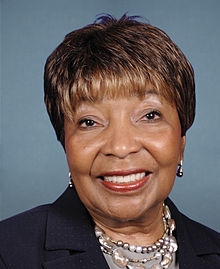
By Congresswoman Eddie Bernice Johnson
Within the vast networks of big personalities and controversial arguments in modern politics, our transportation infrastructure is often overlooked for flashier topics in Congress and across the country. This fact holds true when it comes to the coverage, conversation, and unfortunately, funding of regionally and nationally significant transportation projects.
One might expect transportation to be an issue that both parties and all politicians can easily agree upon. After all, every American can be found using various forms of transportation on a daily basis. Why shouldn’t these systems be given the resources they need to remain viable? Yet, Congress continually struggles on an annual basis to pass a budget that includes a comprehensive plan to adequately fund our nation’s roads, highways, railroads, ports, and airports. As a result, the integrity of our networks slowly deteriorate as time passes and our infrastructure falls behind those of our international competitors.
Yet despite the lack of a cohesive strategy and adequate investment, there is a positive aspect to the way transportation is constructed in this country. It requires federal, state, and local governments to work together – with even greater cooperation these days with private partners. Despite all of our obvious challenges, the cooperation among stakeholders has allowed us to remain globally competitive while still addressing the various transportation needs across our diverse nation.
For instance, the transportation needs of a robust and diverse city such as Dallas is vastly different from the transportation needs of a sprawling metropolis such as Los Angeles. Atlanta and Detroit are largely different from New York and Boston. And it is the ability to recognize these differences which demonstrate that the federal government and its partners do, in fact, have the capability improve our infrastructure.
A current example of an important effort to promote in Dallas’ drive to maintain/enhance its infrastructure is the empowering of DART. DART, or the Dallas Area Rapid Transit authority, operates an impressive network of buses, light rail, rail, and paratransit services in the greater Dallas area. In an expansive city such as Dallas, having a singular, cohesive transit authority such as DART is vital to linking and organizing the system’s many forms of public transportation, while bridging important cultural and economic gaps between Dallas’ many communities. And although DART is a local agency, it does benefit from federal investment.
Each year, the President submits a formal budget request to Congress, outlining the administration’s priorities and funding requests for existing and new programs during the upcoming fiscal year. In President Obama’s Fiscal Year 2017 proposal, the administration included a request for $49 million in Capital Investment Grants, through Core Capacity funding, for the Red and Blue Line Platform Extensions project in Dallas. This is grant money awarded by the United States Department of Transportation to “substantial corridor-based investment in existing fixed guideway system.” This improvement would allow trains along the Red and Blue lines to expand from two-car to three-car trains, thereby rapidly increasing possible ridership and capacity along the DART network. This increased access to public transportation would benefit Dallasites as they travel and work within the city.
Secondly, DART intends to expand capacity and reduce congestion further by implementing a second light rail alignment through the Dallas Central Business District. This would provide a new route on the Orange and Green lines, which would in turn allow enhanced Blue and Red service on the existing alignment. DART is seeking approximately $325 million of this $650 million project to be funded through Department of Transportation Core Capacity funding, highlighting the invaluable relationship between federal and local governments when it comes to funding transportation projects of this scale.
Dallas is one of the most diverse cities in the United States. Nowhere is the diversity of a city showcased more prominently than in the city’s public transportation system, a vast network where the different ethnographic flavors of the city assemble for work and leisure. As we expand our transportation options and allocate the proper funding we need, a city not only grows physically, but its community grows stronger and becomes more closely connected. The federal government can bring our nation’s communities closer together through funding infrastructure.









Well go ahead and fund some infrastructure. And while you are at it; fix these messed up streets in Dallas, Texas! WHY are the streets always so RIPPED TO PIECES in Dallas? WHY do so many people have to replace the front ends on their cars because the streets are so messed up? I know this is a city and not necessarily national issue, but what can you do about this…Congresswoman? Is TPP going to fix this?
And since you are talking about transportation; what about a bullet train from here to Houston and/or San Antonio/Austin? Japan already has one that goes 366 miles per hour. That would make a trip to Houston last less than one hour. Come on Congresswoman…make Congress work…make it happen!
The biggest hold up on the bullet train right now seems to be the landowners fighting the state’s claim on their land.